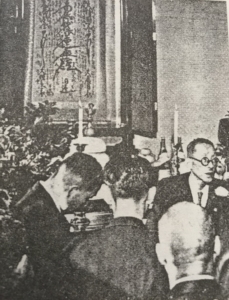This week, we continue our look at the history of Soka Gakkai during the tenure of Toda Josei. We’ll also turn to the rise of the most influential figure in the movement today (and arguably its most influential leader ever): the third president of Soka Gakkai, Ikeda Daisaku.
Sources
Stone, Jacqueline. “Rebuking the Enemies of the Lotus: Nichirenist Exclusivism in Historical Perspective.” Japanese Journal of Religious Studies 21, No 2/3 (June-Sept, 1994).
Victoria, Brian Daizen. “Engaged Buddhism: A Skeleton in the Closet?” Journal of Global Buddhism 2 (2001)
Dator, James Allen. “The Soka Gakkai-Komeito and Its Role in the Sociopolitical Development of Postwar Japan.” The Journal of Developing Areas 6, No 3 (April, 1972).
Metraux, Daniel A. “The Dispute Between the Soka Gakkai and the Nichiren Shoshu Priesthood: A Lay Revolution Against a Conservative Clergy.” Japanese Journal of Religious Studies 14, No 4 (December, 1992).
Mcglaughlin, Levi. Soka Gakkai’s Human Revolution: The Rise of a Mimetic Nation Within Japan.
Images


When I went on a tour of Kyoto, our guide said that Nichiren Buddhism is seen like fundamentalist Christianity is in America. Learning about Soka Gakkai, now I see why. But they also sound a tad culty, especially since they run Komeito and the whole shakubuku thing.